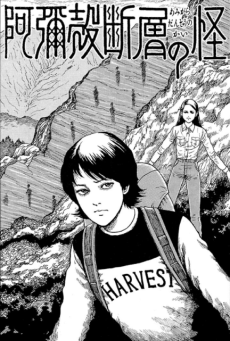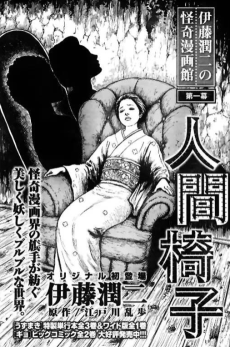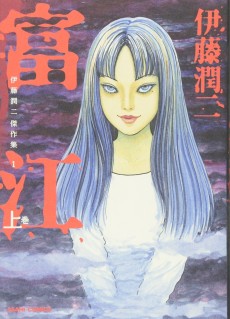ITOU JUNJI TANPENSHUU: BEST OF BEST
STATUS
COMPLETE
VOLUMES
1
RELEASE
February 28, 2019
CHAPTERS
10
DESCRIPTION
A "best of" collection of creepy tales from Eisner award winner and legendary horror master Junji Ito. This ultimate collection presents the most remarkable short works of Junji Ito’s career, featuring an adaptation of Rampo Edogawa’s classic horror story "Human Chair" and fan favorite "The Enigma of Amigara Fault." In a deluxe presentation with special color pages and color illustrations from his most recent long-form manga No Longer Human, every page invites readers to revel in a world of terror.
Contains:
- Okuman Bocchi (Billions Alone)
- Ningen Isu (The Human Chair) [Story: Edogawa Ranpo]
- Kono Yo no Hoka no Koi (An Unearthly Love) [Story: Edogawa Ranpo]
- Mouten no Venus (Venus in the Blind Spot)
- Name Onna (The Licking Woman)
- Umezu-sensei to Watashi (Master Umezz and Me)
- Miirareta Kirida Kyouju (How Love Came to Professor Kirida)
- Ashura no Dansou no Kai (The Enigma of Amigara Fault)
- Daikokubashira Hiwa (The Sad Tale of the Principal Post)
- Wasuregatami (Keepsake)
(Source: Viz Media)
CAST
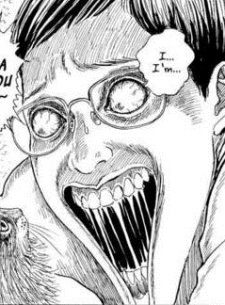
Junji Ito
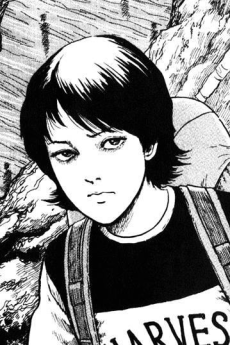
Oowaki
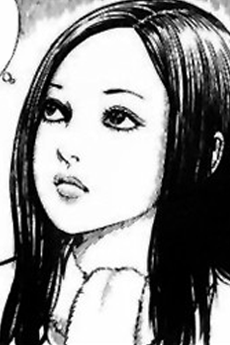
Yuzuho Hayama

Yoshiko Togawa
CHAPTERS
RELATED TO ITOU JUNJI TANPENSHUU: BEST OF BEST
REVIEWS

StrawHatIrene
90/100...must-read... it respects Ito's range in a way that people who only run into Tomie and/or Uzumaki usually don't see.Continue on AniListIf you're looking for a good demonstration of Ito's range, this is a book to try out. For one thing, while his black-and-white artwork is considered iconic, Venus makes a case for his ability to use color. Billions Alone and The Licking Woman contain some damn beautiful moody pages in their beginnings, and The Sad Tale of the Principal Post now contains a full pop art color rendering. But what of the actual content?
Billions Alone:
Originally included in Hellstar Remina; which makes me wonder if Viz's printing of that book will be similar to Frankenstein's by way of stuffing in around a volume's worth of bonus material. Either way, you're smacked right in the face by Ito's knack for detailed, disturbing imagery and close-ups, and a premise that hits a bit close to home right now. Michio is a total loner who has stayed in his room for 7 years until his middle school sweetheart invites him to meet up - in the midst of a mysterious group targeting gatherings by tying everyone in the given vicinity together with fishing wire. Ito's work doesn't really traumatize me as much as it does intrigue me, but this one had me wincing the whole way through. To not go too far into the story, it's mainly the juxtaposition of the jolly facade of this foreboding cult, with the action of stitching together people as if they were fabric. It plays around with the natural human instinct to convene, in the same way the pandemic has (although here, it gets to a point where people don't even want to be near their family in the same house). Escalating to apocalyptic proportions as Ito does and ending off with a chilling twist, Billions Alone is a great opener and showing of how Ito tends to frighten.The Human Chair:
Based off a story by Edogawa Ranpo. Rather than being a straight adaptation, this story briefly summarizes it, creates an aftermath for it, and provides a present-day framing device. After author Yoshiko Togawa receives a letter about someone sneaking into a chair, she assumes it's a love letter - the original story ends with the reveal that it was merely a manuscript and any correlation to her life was coincidental. Ito decides that the manuscript was sent from a fake address and puts the scenario right into her reality. What proceeds is an absolutely insane continuation where no one believes her. Someone on Goodreads called this one impossibly goofy for details such as the chair containing a food-and-water shelf, but it really just goes to show how much attention to detail Ito puts into his work. Indeed, this story is almost humorously absurd, but it wouldn't be funny nor frightening if it didn't just run with it. That goes for many Ito works.An Unearthly Love:
Another Edogawa Ranpo story. Here we have a simple scenario of a man sneaking off from his wife, cheating with some entity the wife cannot see and can hardly parse. The standout of this story is simply how dynamic the entire thing is drawn, as if it were the storyboard to an animated short. Character acting, staging, "timing" between panels, poses. Chunks of the story here are pantomime. Oh, and I'd be remissed to mention facial expressions. There's a particularly golden one here that you just have to see to believe. It really brings the story, staying true to the dramatic roots of an Edgar Allen Poe tale (Edogawa is a pen-name derived from such), to life. I wish I had the expertise to comment on it in a smarter light, but alas, you're looking at someone who used Looney Tunes as a comparison point as to why Collection blew.Venus in the Blind Spot:
A stark departure from the fine literature in the form of a classic sci-fi story. Essentially, some alien-obsessed boys get obsessed with an alien-obsessed girl named Mariko - too bad that they suddenly cannot see from if she gets close enough to them. This story's demonstration is Ito's ambiguity. While this story doesn't contain eldritch imagery or explicit gore, it does keep questions unanswered to give a sense of torment to the reader. This applies to a lot of Ito stories that do contain such imagery, but Venus is content with being a sci-fi mystery that leads it up to the reader whether aliens exist within these particular boundaries and whether they play a role into the story. The element of invincibility is explained, sure, but the technology used and the final page certainly brings those questions into mind. I will say, it's somewhat bold to have a somewhat throwback-esque science fiction story headline this anthology, considering it lacks much of the visceral traits of Ito's art and storytelling. Like I said, range.The Licking Woman:
Starting off with some moody watercolored pages, here's the first "traditional" Ito story of the bunch. It's a genuinely absurd and non-melancholy piece, starring a brave human protagonist pitted against a superhuman force, balancing exaggerated expressions with gruesomely-drawn monsters. Billions Alone messed with the very real desire to gather up with people, this story is about a killer poison tongue. That's no detracting point, either - what you get is a story high in adrenaline and the same ambiguity demonstrated in the previous story. Quite the enjoyable horror romp, if you can stomach the appearance of a giant, blister-filled, cracked tongue.Master Umezz and Me:
Whenever Ito talks about his own life, he always does so in a purely humorous fashion (see Uzumaki's bonus chapters). His cat diary wasn't a parody of his horror works, that is literally just how he makes manga. This story, which would usually be the tail end of a book, is no exception. Discussing Ito's experience with Kazuo Umezz's work throughout his own childhood and even his career, this story wastes no time with balls-to-the-wall expressions and humor. Even when Ito grows from his Souichi Tusjii-like youth self, the cartoonish flair doesn't exactly wear off. If one can't find the inner workings of a solid gag manga in Ito's other stories, they'll definitely find it here.How Love Came to Professor Kirida:
Another literature-based adaptation, this time from the work of Robert Hichens. Like Human Chair, this gives a framing device to a classic story, though I can't tell how much is Ito's invention and how much was devised by Hichens from the start. This one also has a more classical, dramatic Poe feel to it, no matter how "silly" the use of a mimicking parrot is. It's a traditional ghost story that is honestly elevated by the same sense of panel timing and character acting as Unearthly Love.Gyo reprints:
If you've heard of Junji Ito, I shouldn't have to explain The Enigma of Amigara Fault to you, being arguably his most iconic story. A tale of a mountain that inexplicably has holes shaped exactly like particular individuals in the present-day, forever beckoning their flesh-and-blood likenesses. Its overbearing claustrophobia and anxiety, leading up to a frightening bombshell of an ending, has forever seared into the minds of millions. There's a good reason it has experienced mass cultural osmosis even before Junji Ito's work had begun seeing much mainstream success outside Japan, inspiring several light-hearted parodies and memes along the way. It's a fantastic story that I still would've rather seen replaced by something else, in this context. If I wanted to read this, I'd buy Gyo, considering the only difference here is the inclusion of two color panels. Not pages, panels. As for The Sad Tale of Principal Post, not much to say. There's only four pages and it's a rather standard unsolved horror mystery. Still, there's something oddly satisfying about seeing a whole Ito story in color, so it is an upgrade from the Gyo version.Keepsake:
I notice some of the themes of No Longer Human seeping into this one. The plot point of an affair leading to a blight of a child certainly brings that book to mind. In general, this one skews closer to the interpersonal drama of that adaptation than it does the usual Ito fare. I enjoyed this one and how batshit its twists could get, but it's not really a standout amongst Ito's other works.As a whole, this is a must-read. Even the worst ones are damn good, and honestly, it says a lot that the most damning inclusion is one of Ito's best works anyway. If nothing else, it respects Ito's range in a way that people who only run into Tomie and/or Uzumaki usually don't see.
SIMILAR MANGAS YOU MAY LIKE
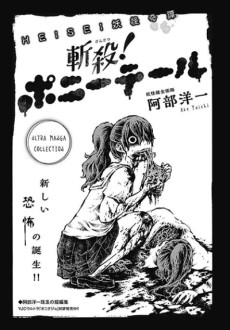 ONE SHOT ActionZansatsu! Ponytail
ONE SHOT ActionZansatsu! Ponytail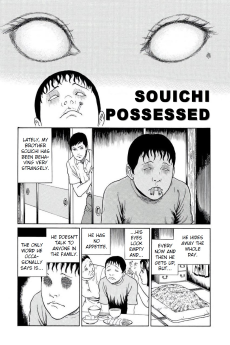 ONE SHOT HorrorMiirareta Souichi
ONE SHOT HorrorMiirareta Souichi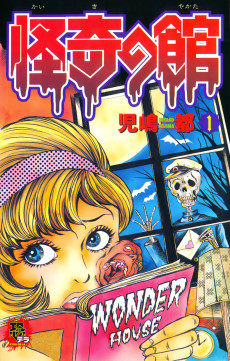 MANGA HorrorKaiki no Yakata
MANGA HorrorKaiki no Yakata MANGA ActionTensai-tachi no Kyouen
MANGA ActionTensai-tachi no Kyouen
SCORE
- (3.65/5)
MORE INFO
Ended inFebruary 28, 2019
Favorited by 92 Users

